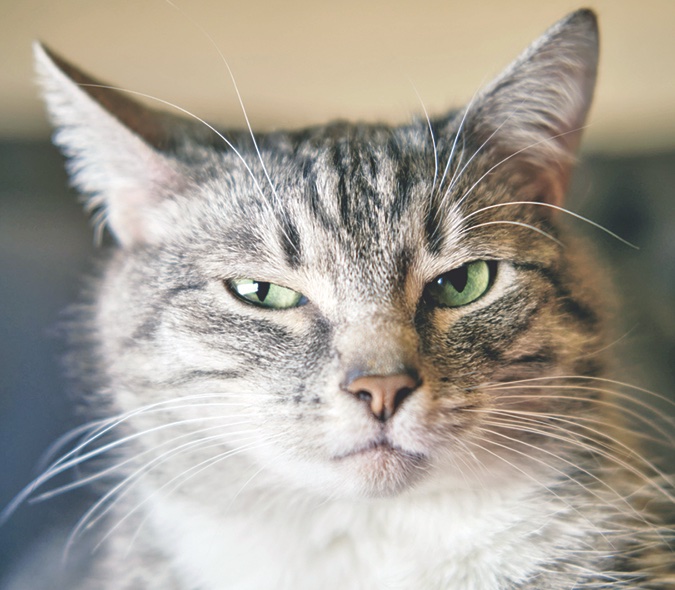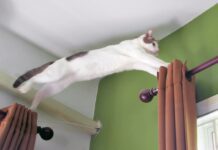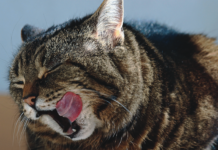Researchers from the University of Kansas and Lyon College studied feline facial expressions to determine what message a cat’s facial expression is trying to convey. Evolutionary psychologist Brittany Florkiewicz, PhD, who had studied facial expressions in various primates, joined with medical student Lauren Scott to record the behavior and expressions of 53 cats living in the Cat Cafe Lounge, a non-profit rescue organization in Los Angeles, to see what they could learn about how cats express themselves.
The researchers gathered over 150 hours of footage with over 276 different facial expressions. They separated the expressions into friendly or unfriendly with some dubbed as indeterminate.
Friendly expressions—with closed eyes and ears and whiskers oriented forward—were noted 46% of the time. In these examples, the cats were often playing with a buddy, lying next to a friend, or grooming a friend.
About 37% of the expressions were deemed unfriendly with ears tilted back (often tight to the head) and pupils constricted. The appearance was often coupled with growling, hissing, swatting at another cat, or running away.
The researchers said they found “that compositionality, rather than complexity, was significantly associated with the social function of intraspecific facial signals. Our findings indicate that domestication likely had a significant impact on the development of intraspecific facial signaling repertoires in cats.”
This study reinforces that domestic cats are truly social animals. We simply need to pay more attention to the subtleties of their expressions and behaviors.ν
Scott, L., et al. “Feline faces: Unraveling the social function of domestic cat facial signals,” Behavioural Processes, Volume 213, 2023, 104959, ISSN 0376-6357




